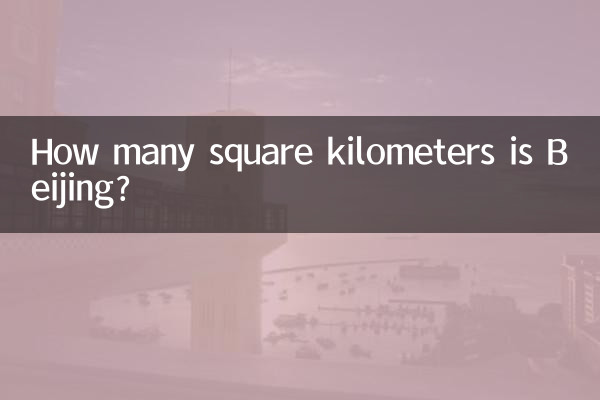How many square kilometers is Beijing: analysis of urban area and recent hot topics
As the capital of China, Beijing is not only the political and cultural center, but also a representative of the international metropolis. Its total area is approximately16,410 square kilometers, of which the urban area is approximately 1,368 square kilometers. This article will combine Beijing’s urban area data with hot topics across the Internet in the past 10 days to present you with a structured analysis report.
1. Overview of Beijing area data

| area | Area (square kilometers) | Proportion |
|---|---|---|
| Beijing’s total area | 16,410 | 100% |
| urban area | 1,368 | 8.3% |
| suburban area | 15,042 | 91.7% |
| plain area | 6,390 | 38.9% |
| Mountain area | 10,020 | 61.1% |
2. Recent hot topics on the Internet (last 10 days)
Combined with Beijing’s urban characteristics, the following are the hot topics related to Beijing that have been hotly discussed on the Internet recently:
| Topic Category | Specific content | heat index |
|---|---|---|
| urban development | New progress in the construction of Beijing urban sub-center | ★★★★☆ |
| Transportation | Beijing Subway New Line Planning Announcement | ★★★☆☆ |
| environmental protection | Beijing air quality continues to improve | ★★★☆☆ |
| cultural activities | Beijing International Film Festival opens | ★★★★☆ |
| Technological innovation | Zhongguancun Science and Technology Park’s latest achievements released | ★★★★★ |
3. The relationship between Beijing’s urban area and development
Of Beijing’s 16,410 square kilometers, urban areas account for only 8.3%, which reflects the"Multi-center, networked"urban spatial layout strategy. The construction of Beijing's urban sub-center, which has been hotly discussed recently, is precisely to relieve the pressure on the central city and make full use of the area resources in the suburbs.
It can be seen from the recent hot spots that Beijing’s development focuses on:
1.space optimization: Improving land use efficiency through sub-center construction
2.transportation interconnection: New metro lines connect urban areas with outer suburbs
3.ecological protection: Use 61.1% of the mountain area to build an ecological barrier
4. Area and hotspot distribution of various districts in Beijing
| administrative district | Area (square kilometers) | Recent hot topics |
|---|---|---|
| Chaoyang District | 470.8 | CBD business development |
| Haidian District | 431.0 | Technological innovation |
| Tongzhou District | 906.0 | Urban sub-center construction |
| Yanqing District | 1,993.0 | Reuse of Winter Olympics venues |
| Miyun District | 2,229.0 | Water source protection |
5. Summary
Beijing's 16,410 square kilometers of land are undergoing rapid changes. It can be seen from recent hot spots that the planning and development of this megacity focuses not only on the functional improvement of the central city, but also on the rational use of suburban space. In the future, with the advancement of the construction of the city's sub-center and the Beijing-Tianjin-Hebei coordinated development strategy, Beijing's land resources will be allocated more scientifically, injecting new vitality into this thousand-year-old capital.
Understanding Beijing’s area data helps us better understand the city’s development logic. From 1,368 square kilometers of urban area to 15,042 square kilometers of suburbs, every inch of land tells the story of the capital's development. Recent hot topics have also confirmed this: whether it is technological innovation or environmental protection, they are closely related to Beijing’s unique spatial pattern.

check the details

check the details